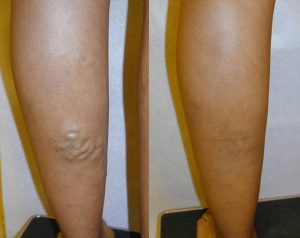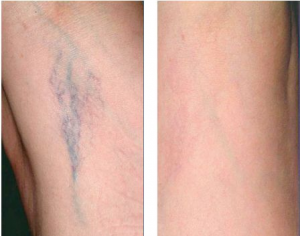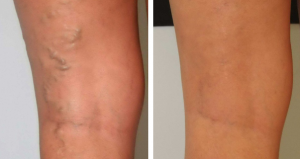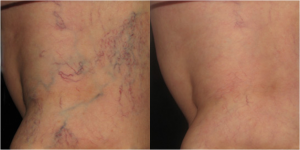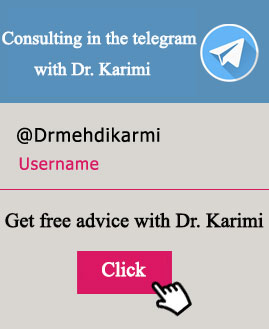Laser Foot Varicose Foot Treatment: Benefits and Costs

Varicose veins develop when the valves that pump blood toward the heart become missing or damaged, making blood pool in the veins. Most often occurring in the legs, the condition is typically painful and indicated with red or bluish-purple veins that are raised and swollen. Whether to reduce the pain or improve the appearance of their veins, many individuals consider laser treatment for varicose veins because it’s less invasive and highly effective.
What is laser treatment and how does it work?

A laser is a highly focused beam of light and some specialist can use laser to treat varicose veins. Laser heat damages a vein, which makes scar tissue form. This scar tissue closes the vein. A closed vein loses its source of blood and dies. After a year or two, the vein is likely to disappear. Removing varicose veins by laser involves heating the vein from within in order to seal it. This is usually done under local anesthetic and, sometimes, a mild sedation. Your specialist or consultant will discuss whether this procedure is suitable for you. Spider veins and small varicose veins can be treated with laser treatment applied from the surface of the skin. The laser applies an intense energy that essentially destroys the small blood vessels in the surface of the skin. Results are variable, and multiple treatments may be necessary to have some benefit. This procedure is generally less invasive than sclerotherapy and vein stripping. A possible problem that may arise after laser treatment is a temporary discoloration of the skin. There are two types of laser treatment for varicose and spider veins these include: Simple laser treatment and endovenous laser treatment.
Simple laser Treatment
Simple laser vein treatment is done on the outside of your skin and treats spider veins under the surface of the skin. Laser heat damages a vein, which makes scar tissue form. This scar tissue closes the vein. A closed vein loses its source of blood and dies.
Candidates
Candidates for simple laser treatment include patients who have tiny varicose veins and small spider veins.
Benefits
- Laser surgery is an effective and safe method of varicose vein treatment.
- Only the damaged part of vein is treated
- Surrounding tissue are not damaged
- Surgery is completely painless
- Short duration of the surgery
- Fast recovery process
- The surgery does not leave any scars or cosmetical defects
Procedure
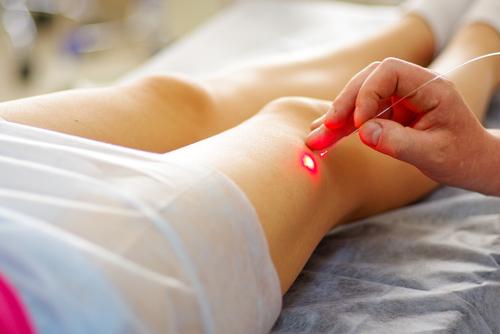
Simple laser vein treatment is done on the outside of your skin. It can treat spider veins and tiny varicose veins just under the skin's surface. Usually, more than one laser session is needed. They are scheduled every 6 to 12 weeks, as prescribed by your doctor. If you have poor blood circulation feeding these tiny veins, the larger "feeder" vein must first be treated with surgery, endovenous laser or radiofrequency treatment, or sclerotherapy Simple laser treatment is done for small spider veins and tiny varicose veins.
Recovery
After the procedure, you will be allowed to go home right away. You should limit activity for three to five days for optimal results. However, you may need to wear compression stockings for one week or longer.
Endovenous Laser Treatment

Endovenous Laser Therapy, known as EVLT, is a minimally invasive procedure used to treat unsightly varicose veins. Endovenous Laser Treatment uses laser energy, which is simply a highly concentrated beam of light. Medical lasers work by delivering this light energy to the targeted tissue with extreme precision, so as not to affect the surrounding tissue. EVLT is fast, safe, and effective and provides cosmetic benefits which improve the patient's quality of life.
Candidates
Almost all patients with varicose veins are suitable for EVLA. Those few who are not suitable (usually those with small recurrent veins after previous surgery) can usually be managed with just foam sclerotherapy.
Benefits
EVLT is a relatively uncomplicated procedure. Some of the benefits of this therapy include:
- Takes less than an hour to perform
- Is an outpatient procedure
- Offers immediate relief from symptoms
- Does not necessitate a long recovery
- Does not require general anesthesia
- Results in no scarring
- Has a success rate of 98 percent
Procedure
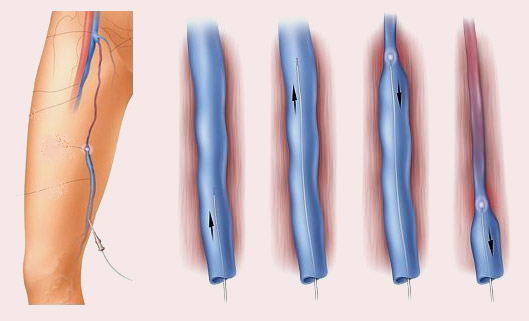
An ultrasound scan is performed and the veins to be treated are marked with a pen. The area to be treated is prepared with an antiseptic. Once a local anesthetic has been applied to the area to minimize any pain, a laser probe is inserted through a needle inserted into the vein. The specialist maneuvers the probe precisely, using ultrasound imaging to identify problems in particular veins and positioning the laser accordingly. The laser energy is then targeted along the length of the damaged vein, causing its walls to collapse so that blood can no longer flow through. Blood from this vein will be diverted to functional veins. As these healthy veins take over, circulation frequently improves and symptoms are relieved. Once the procedure of endovenous laser therapy is completed, the probe is removed from the vein and a dressing and compression bandages are applied to the area. The entire EVLT procedure takes less than an hour to perform and is a viable option for almost all patients.
Recovery
Soon after your treatment you will be allowed home. You will have to wear the stockings for up to two weeks and you will be given instructions about how to bathe. You should be able to go back to work straight away and get on with most normal activities.
Cost
Cost of laser treatment for varicose and spider veins depend on the type of varicose vein, severity of it, area to be treated, type of treatment, doctor's fees and geographical location.

